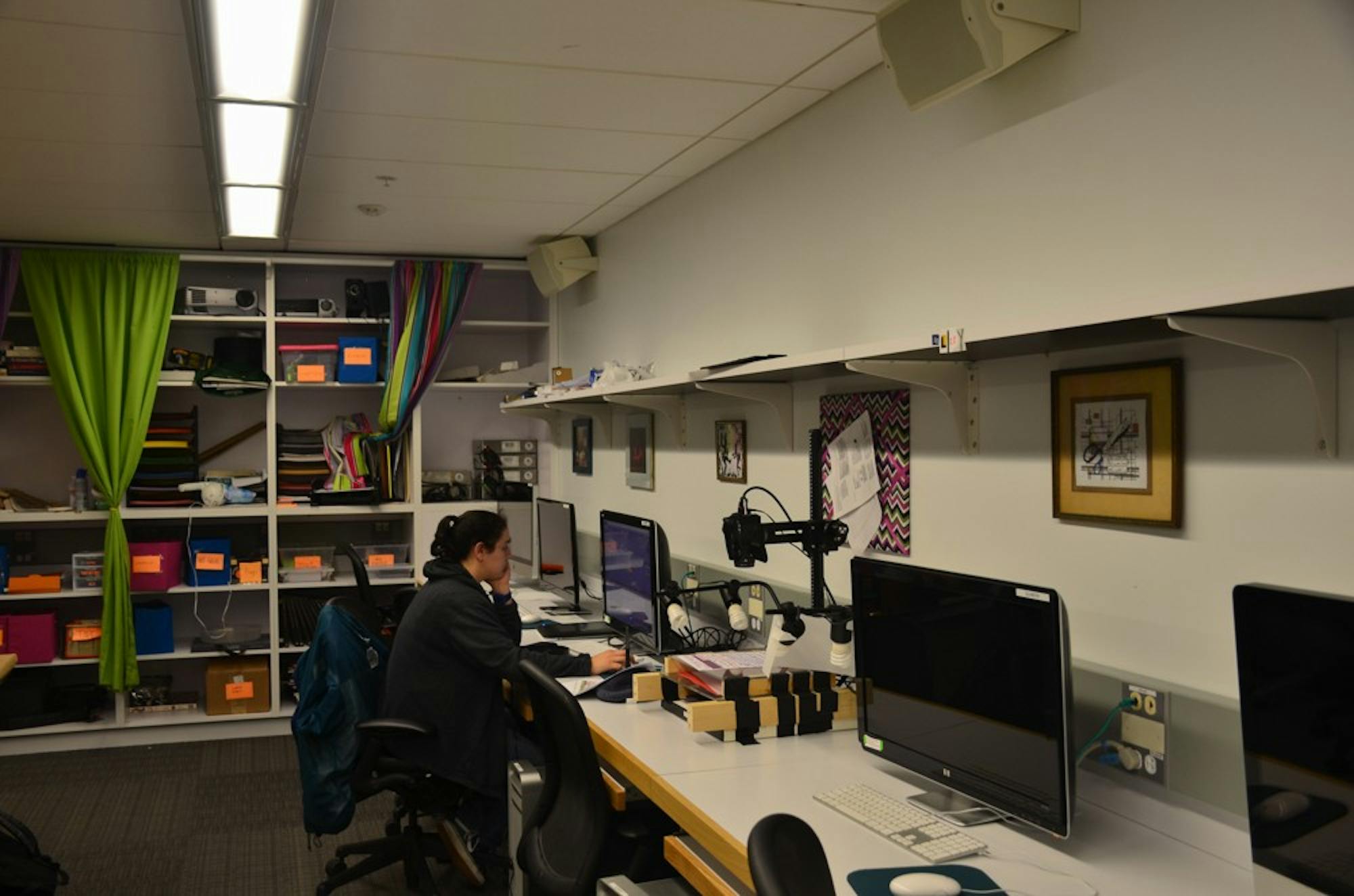Tucked away in a corner on the second floor of the Black Family Visual Arts Center, the animation studio serves as a place for the imaginative and creative to stretch their minds. Film and media studies professor Jodie Mack has created a studio unlike the typical blackboard-lined classroom with rows of desks.
“It was the most incredible classroom that I’ve ever been into; it really left a huge mark on me,” Ellie Peterson ’15 said.
In the animation studio, a large table wrapped in brown craft paper occupies the center of the room, facilitating group discussion and welcoming doodling.
“The animation studio is a really inviting space and very well decorated,” Kwaii Bell ’16 said. “You can tell that Jodie has put her personal touch on the room.”
In the back of the room, fuzzy pipe cleaners keep colorful, purple and lime green striped curtains together. These curtains frame shelves filled with canvas boxes brimming with various supplies — from glue sticks to tissue paper. Chevron-patterned pink-and-green bulletin boards line the walls. Computer workstations line the perimeter of the room. In one corner hangs a mobile of paper cranes, their wings fluttering each time the door lets a breeze inside.
The welcoming environment motivates students to commit their time.
“Once you go into [the studio] you can feel [the energy],” James Rhodes ’19. “It’s a place you want to be and spend time.”
Currently, one of the animation classes is working on a collaborative music video. Each student is responsible for a segment or layer of animation, and the class will come together to create the final project.
For a dancing disposable cups segment, the students are working on enhancing the animation of the cups’ stick-figure appendages and animating mouths for the characters. Students workshopped another segment involving a spinner, throwing out suggestions to “make the viewer feel a little unstable” by animating the spinner to tilt in the third dimension.
Typical of any animation assignment, the work is about the details, making it inherently challenging, and requiring time and patience.
“The thing about animation is that it’s really time consuming, but the great thing about it is that I can sit in front of my computer and work hours and hours and it never feels like work,” Gage De La Cruz ’19 said.
Many students found the animation studio through their experiences with Mack. Zoe Furlong ’14 was more interested in filmmaking than animation before she took Mack’s course.
“Jodie is very memorable and really enthusiastic about animation,” Furlong said. “I really liked her, and she pretty much convinced me to take a course in animation.”
Peterson took an animation course after Mack convinced her to “give it a shot.” After taking her first course her senior fall, she “really fell in love with it.”
Because of the animation studios relative mysteriousness, many animation students do not start off in an animation classroom.
Walker Fisher ’14 designed “Ambiguous: a post-modern masque” that incorporated both animation and theater. Jaki Kimball ’16 has taken animation courses through the computer science department, learning to animate digitally.
“I’ve always loved storytelling, and that was part of why I decided to modify my computer science major with digital arts,” Kimball said.
Students can incorporate animation with studio art and film in addition to computer science and theater.
Jordan Kastrinsky ’16 said that animation challenged him to “think outside of [his] preconceived film knowledge.”
“I have really had to work at pushing myself to understand what animation is and how to go about bringing a novel way, at least to me, of storytelling to the screen that doesn’t just involve vérité footage,” Kastrinsky said.
Mack is excited about the growth occurring in the studio.
“We have a lot of different elements that provide a unified, liberal arts approach to animation,” Mack said.
Mack’s animation classes certainly reflect the liberal arts approach at work. Beyond the creation of animation, topics discussed also include the path from primitive to commercial forms of animation, the history of the industry and the democratization of film.
Yet, beyond a dose of serendipity, getting started in animation requires recognition of the many ways individuals can use their talents to create animation.
“I feel [students] are afraid to take animation because they can’t draw, but animation invites all sorts of skill sets,” Mack said.
For students who would like to get their feet wet in animation, Film Studies 35, offered in the fall, is a “full on boot camp for different animation techniques” and serves as an introductory class to animation.




